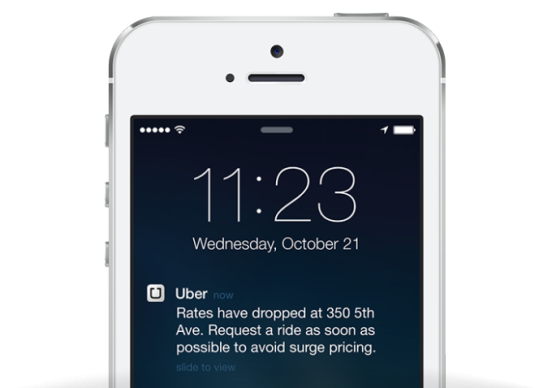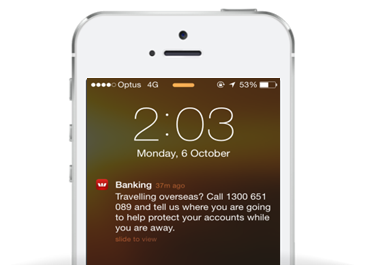
Having a mobile app without a push notification communication strategy is a little like driving a car with a burst tire – it will only get you so far before you have to stop, and by that point it may have done more damage than you can imagine.
For those of you who don’t know what a push notification is – it’s the little message which appears at the top of your phone (when you are active on your phone) or on the lock screen informing you about something that is related to an app you have downloaded. It’s all programmed from inside the app so no cost is incurred to the advertiser for this to appear. For these messages to appear the user has to accept them, of which over half of app users do.
But let’s take a step back – apps are important, I mean really important. A study found that up to 86% of us still prefer a mobile app to mobile websites due to convenience, speed & ease of use. In fact the average user now has 41 apps on their phone at any one time. So let’s admit we should focus at least a little time on them.
According to Localytics 22% of apps are downloaded and only used once – they are used and then forgotten about. As a consumer has taken their time to download the app we need to make damn sure they actually use it!
Enter the push notification (Da da daaaa)…
Push notifications enable you to keep the conversation flowing between your brand and the consumer. Before you start blasting through push notifications you have to ask yourself “What do users want to learn about? What information are they actively seeking, and how can we provide it to them via push?”
A great example of this is below is from Westpac who have geo-fenced Australian Airports. When a user is in close location of an airport this push notification pops up from the Westpac banking app:

What is vitally important is that today’s users expect highly personalized communication, and are bothered when they receive blast notifications. In addition, when push notifications aren’t sent to each user at the right time, it can be very disrupting – Imagine receiving a notification from a job site app in the middle of a work meeting for example. That app would be gone quicker than you could say “Awkies“… (Please don’t ever say awkies!)
Making sure your app delights your users is a high-stakes game, yet can be an extremely effective way to re-engage your user.
According to a Localytics study, a great push is twice as effective as a great email*. The average email click-through rate for retail and e-commerce companies is hovering around 3%.
Push notifications also can also result in high conversion rates, especially when the notification is targeted to that specific user. The same Localytics study found that on average 15% of users who click through on a generic push message converted; in contrast 54% convert when clicking on a slightly more targeted push message. This is surely proof that there has to be a communication strategy behind each push message.
Push notifications can now be managed via a dashboard in certain analytic SDK platform which you can implement within your clients app, and are becoming increasingly personalized the more developments are made to each platform.
Robert Williams is Senior Account Manager for Airwave.